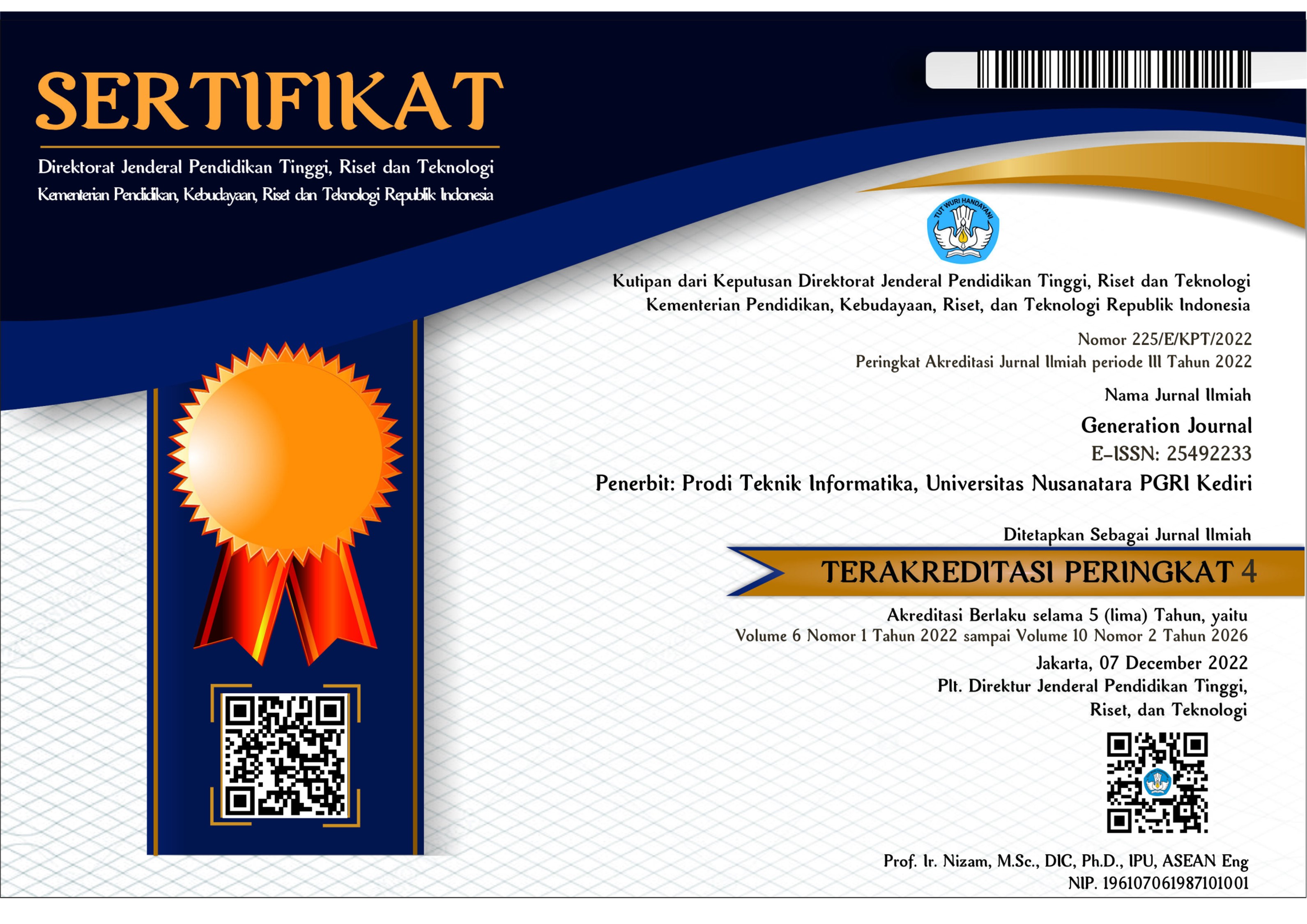Analytical Hierarchy Process to Determine Drug Inventory at The Pharmaceutical Installation of UPT Puskesmas Mandala
DOI:
https://doi.org/10.29407/gj.v9i2.25699Keywords:
AHP, Drug requirement, Decision making, Drug planning, RapidMinerAbstract
Inaccurate planning of drug needs can hamper health services, especially in facilities such as UPT Puskesmas Mandala. This research aims to help the process of determining drug supplies effectively by applying the Analytical Hierarchy Process (AHP) method. This method is used to determine priority weights based on four main criteria which include price, availability, popularity, and effectiveness. Data were obtained through observations and interviews at UPT Puskesmas Mandala, then analyzed using RapidMiner software. The results of the analysis show that Vitamin C drugs have the highest score of 0.327915 so they are the top priority in procurement, while Cetirizine is ranked lowest. This finding proves that the AHP method is able to prioritize objectively and systematically, so that it can be a solution in improving the efficiency of planning drug needs at puskesmas
References
[1] S. A. R. Buyung Solihin Hasugian, Zulham, “Pengelolaan Stok Obat-Obatan Dalam Meningkatkan Pelayanan Di Puskesmas Terjun Kecamatan Medan Marelan,” J. Pengabdi. Masy., vol. 2, no. 2, pp. 67–74, 2023.
[2] Amanta Rajendra Rafi Ramadani, Ika Purwidyaningrum, and Santi Dwi Astuti, “Analisis Pengelolaan Obat Di Instalasi Farmasi Puskesmas X Kabupaten Sukoharjo,” INSOLOGI J. Sains dan Teknol., vol. 3, no. 4, pp. 459–468, 2024, doi: 10.55123/insologi.v3i4.4030.
[3] F. P. F. Sholehah, I. Iswandi, and J. M. Peranginangin, “Development and Evaluation of Drug Management Information System in Mijen Community Health Center Demak,” J. Manaj. DAN PELAYANAN Farm. (Journal Manag. Pharm. Pract., vol. 14, no. 1, p. 51, 2024, doi: 10.22146/jmpf.82802.
[4] F. P. Gurning, S. F. Siregar, U. R. Siregar, R. Rusmayanti, and F. Nurhasanah, “Analisis Manajemen Pengelolaan Obat Pada Masa Pandemi Di Puskesmas Sering Kecamatan Medan Tembung,” J. Kesehat. Masy., vol. 9, no. 5, pp. 688–695, 2021, doi: 10.14710/jkm.v9i5.30742.
[5] E. Masruriati and R. Septiyana, “Manajemen pengelolaan obat tuberkulosis di puskesmas brangsong 01,” J. Ilmu Keperawatan dan Kesehat., vol. 1, no. 2, 2024, [Online]. Available: https://jurnal.naiwabestscience.my.id/index.php/jikk/article/view/41
[6] P. Eviyan and F. Indrawati, “Sistem Perencanaan Manajemen Logistik Obat di Puskesmas,” Indones. J. Public Heal. Nutr., vol. 3, no. 2, pp. 215–222, 2023, doi: 10.15294/ijphn.v3i2.59240.
[7] P. H. Nguyen, T. V. K. Dang, P. T. Nguyen, T. M. H. Vo, and T. T. M. Nguyen, “5-year inventory management of drug products using ABC-VEN analysis in the pharmacy store of a specialized public hospital in Vietnam,” Pharmacia, vol. 69, no. 2, pp. 517–525, 2022, doi: 10.3897/pharmacia.69.e84348.
[8] M. P. Pratitis, J. M. Peranginangin, and I. Purwidyaningrum, “Evaluasi Sistem Informasi Manajemen pada Laporan Pemakaian dan Lembar Permintaan Obat di Puskesmas X,” J. Manaj. DAN PELAYANAN Farm. (Journal Manag. Pharm. Pract., vol. 12, no. 4, p. 208, 2023, doi: 10.22146/jmpf.76079.
[9] U. Khasanah, N. M. Yasin, and S. Satibi, “Overview of Factors Influencing Drug Management At Primary Health Centers in Indonesia: a Systematic Review,” J. Farm. Sains dan Prakt., vol. 9, no. 3, pp. 231–243, 2023, doi: 10.31603/pharmacy.v9i3.9125.
[10] H. Fajarini, “Implementation of Drug Management Policies at One of The Community Health Centers in Brebes Regency,” Soepra, vol. 8, no. 2, pp. 177–190, 2022, doi: 10.24167/shk.v8i2.5054.
[11] V. M. Jorge, Z. M. Esteban, S. A. Bruno, H. F. Yeralin, and D. M. J. Pablo, “Implementation of supply management strategies by the pharmacy service in a general hospital during the COVID-19 pandemic,” Explor. Res. Clin. Soc. Pharm., vol. 7, no. July, pp. 0–3, 2022, doi: 10.1016/j.rcsop.2022.100161.
[12] A. N. N. Madeline Angeline Tobing, Chrismis Novalinda Ginting, “Analysis of the Performance of Pharmacy Staff During Distribution of Medication Using the AHP and Rating Scale Method,” J. LA MEDIHEALTICO, vol. 04, no. 01, pp. 42–48, 2023, doi: 10.37899/journallamedihealtico.v4i1.1443.
[13] P. Sharma, A. Jain, S. K. Sharma, S. K. Sharma, and A. Parashar, “Selection of Teaching Faculty in Pharmacy/Engineering Institutes by Using an Analytical Hierarchy Process (AHP): A Procedure Proposed,” Indian J. Pharm. Educ. Res., vol. 58, no. 3, pp. 940–948, 2024, doi: 10.5530/ijper.58.3.103.
[14] O. A. Adeyemi, M. Potticary, F. Sunmola, M. O. Idris, E. O. Adeyemi, and I. O. Raji, “A Comparative analysis of service supply chain performance using analytic hierarchy process methodology,” Procedia Comput. Sci., vol. 232, pp. 3102–3111, 2024, doi: 10.1016/j.procs.2024.02.126.
[15] S. Zega, “Pharmacist Acceptance Decision Support System Applying AHP and COPRAS Methods,” Int. J. Informatics Data Sci., vol. 1, no. 1, pp. 26–35, 2023.
[16] A. O. Mogbojur, O. A. Olanrewaju, and T. O. Ogunleye, “Evaluation of inventory management practice in food processing industries in Lagos: Analytical hierarchy process approach,” Niger. J. Technol., vol. 41, no. 2, pp. 236–246, 2022, doi: 10.4314/njt.v41i2.5.
[17] S. K. Huang and W. H. Lai, “AHPAnalysis of Key Influential Factors for Hospital Pharmacy Management,” Rev. Integr. Bus. Econ. Res., vol. 10, no. 4, pp. 58–78, 2021.
[18] M. Arslan, “Application of AHP method for the selection of pharmaceutical warehouse location,” Ankara Univ. Eczac. Fak. Derg., vol. 44, no. 2, pp. 253–264, 2020, doi: 10.33483/jfpau.709528.
[19] A. C. M. Sales, L. G. D. A. Guimarães, A. R. V. Neto, W. A. El-Aouar, and G. R. Pereira, “Risk assessment model in inventory management using the AHP method,” Gest. e Prod., vol. 27, no. 3, pp. 1–20, 2020, doi: 10.1590/0104-530x4537-20.
[20] I. Saracoglu and S. Mifdal, “Inventory Classification with AHP and ABC Analyses: A Case Study for Dental Products Production,” Comput. Decis. Mak. An Int. J., vol. 1, pp. 151–169, 2024, doi: 10.59543/comdem.v1i.10487.
[21] E. Bilgin and K. Tanyılmaz Arş Gör, “Multi-criteria ABC inventory classification using AHP: a case study,” İktisadi ve İdari Bilim. Fakültesi Derg., vol. 3, no. 2, pp. 83–92, 2021, [Online]. Available: https://dergipark.org.tr/tr/pub/aruiibfdergisi
[22] D. Das, A. Datta, P. Kumar, Y. Kazancoglu, and M. Ram, “Building supply chain resilience in the era of COVID-19: An AHP-DEMATEL approach,” Oper. Manag. Res., vol. 15, no. 1–2, pp. 249–267, 2022, doi: 10.1007/s12063-021-00200-4.
Downloads
Published
Issue
Section
License
Copyright (c) 2025 Siti Juhroini Ritonga, M. Fakhriza

This work is licensed under a Creative Commons Attribution-ShareAlike 4.0 International License.
Authors who publish with this journal agree to the following terms:
- Copyright on any article is retained by the author(s).
- The author grants the journal, the right of first publication with the work simultaneously licensed under a Creative Commons Attribution License that allows others to share the work with an acknowledgment of the work’s authorship and initial publication in this journal.
- Authors are able to enter into separate, additional contractual arrangements for the non-exclusive distribution of the journal’s published version of the work (e.g., post it to an institutional repository or publish it in a book), with an acknowledgment of its initial publication in this journal.
- Authors are permitted and encouraged to post their work online (e.g., in institutional repositories or on their website) prior to and during the submission process, as it can lead to productive exchanges, as well as earlier and greater citation of published work.
- The article and any associated published material is distributed under the Creative Commons Attribution-ShareAlike 4.0 International License













